Research point:
Look at the work of Claude Lorrain and J.M.W.Turner. Write notes on how those artists divide their landscapes into foreground, middle ground and background.
I have looked at Claude Lorrain and J Turner; as I was researching these artists I came across some other landscape art works which seemed relevant so I decided to include those too. I hope this is acceptable. The other artists include Richard Wilson and Philippe De Loutherbourg. I came across them whilst looking at Turner’s paintings in “British Painting – The Golden Age” by William Vaughn.
One of the keys to dividing a landscape appears to be to have a view which goes a long way and then have things at different distances. For instance: in “The Fighting Temeraire Tugged to her Last Berth to be Broken Up, 1838” Turner uses what appears to be a buoy in the foreground, two boats in the middle ground and another boat off in the distant background, with the horizon and the setting sun.
Philippe De Loutherbourg, in “Coalbrookdale by night – 1801”, divides his painting in the same way, except his painting is busier, with more figures. There are humans, horses and pieces of pipe in the foreground, with a house and a large tree in the middle ground. In the background there is a house with fire behind it, clouds lit up by the fire, a hill and a full moon. Loutherbourg uses light to separate the background from the other grounds.
What I am noticing about some of Turner’s landscapes is that he seems to choose flat areas in which you can see larger objects in the distance and smaller objects in the foreground. (Ploughing up Turnips, Windsor” 1808-10 J M W Turner)
Richard Wilson’s Croome Court, Worcestershire, (1758-59), uses figures of people and a tree in the foreground, trees and a mansion in the background, while the middle ground is fairly empty, except for some creatures. I think the middle ground is effectively marked out by the vastness of itself. The fact that it is a large empty space of grass gives a presence to the middle ground. It also means that the image is not over crowded.
“Petworth Park: Tillington Church in the Distance” 1828. Turner. This painting has a chair and deer in the foreground, a figure with some other creatures in the middle ground and trees and a church in the background. I am not certain where the clump of trees on the left are positioned – that is: I do not know if they are in the back of the middle ground or the front of the background.
In Landscape with Shepherds Claude Lorrain uses similar methods as Turner in that there are objects or figures throughout the image gradually becoming further away so that the distance is measured by their decreasing size. So there are people in the foreground, building and tree in the middle ground, bridge in the far middle ground and hills in the background. This view gives a strong idea of depth.
Landscape with Merchants has a similar structure. I wonder if these paintings took a lot of planning. I will have to look for views such as this to make such a drawing. The things in the distance become paler with aerial perspective. This is important to the fact that they look far away.
Seascape with Aeneas on Delos is interesting because it is not a view of a long distance, but it still has the division of foreground, middle ground and background. It is divided because there is a building with people, then a tree, then another building, and then the sea. Again, aerial perspective is important in this image because without it the illusion of depth would not be created and it would be a flattened or foreshortened landscape.

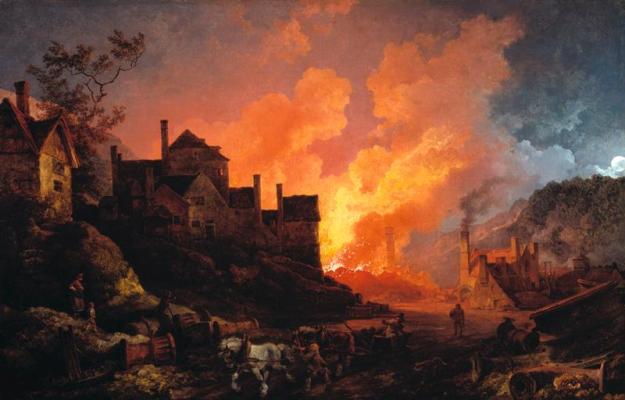
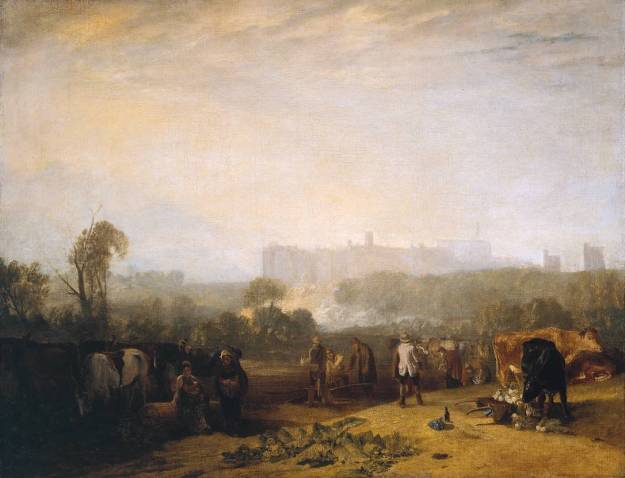
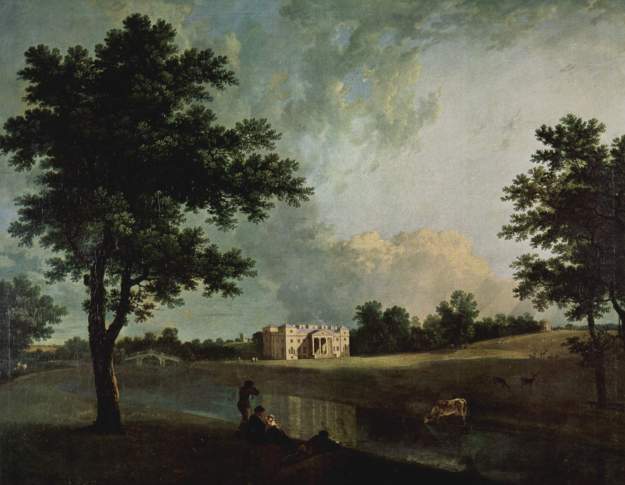

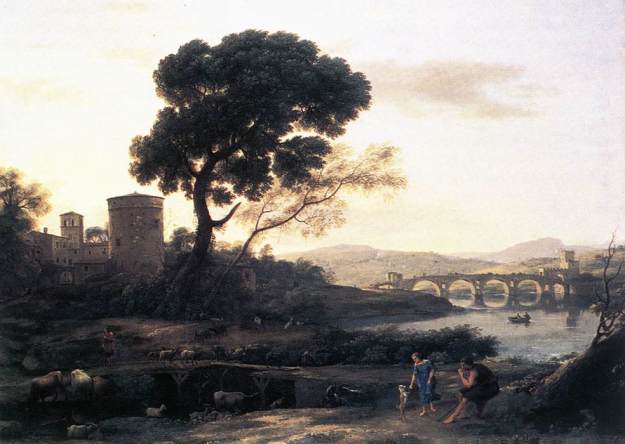
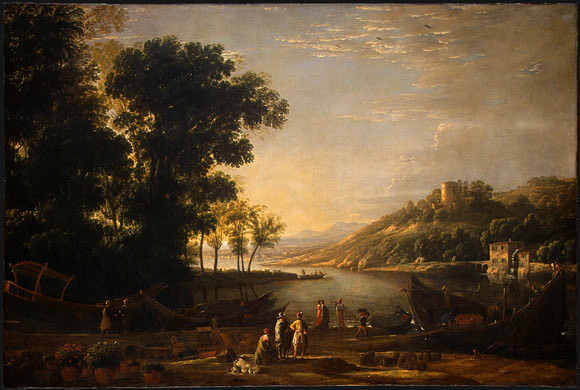
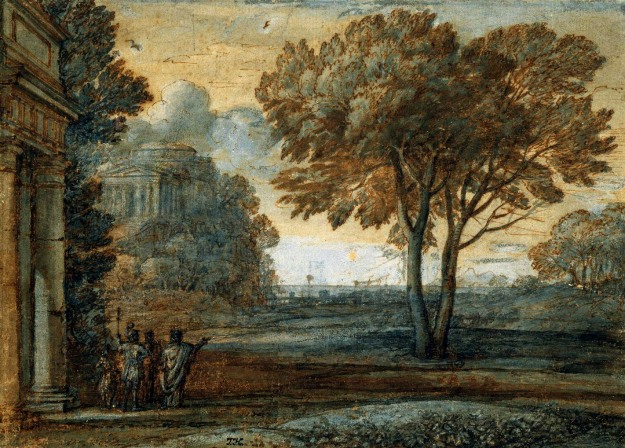
Pingback: Project: Landscape drawing | Eve's art